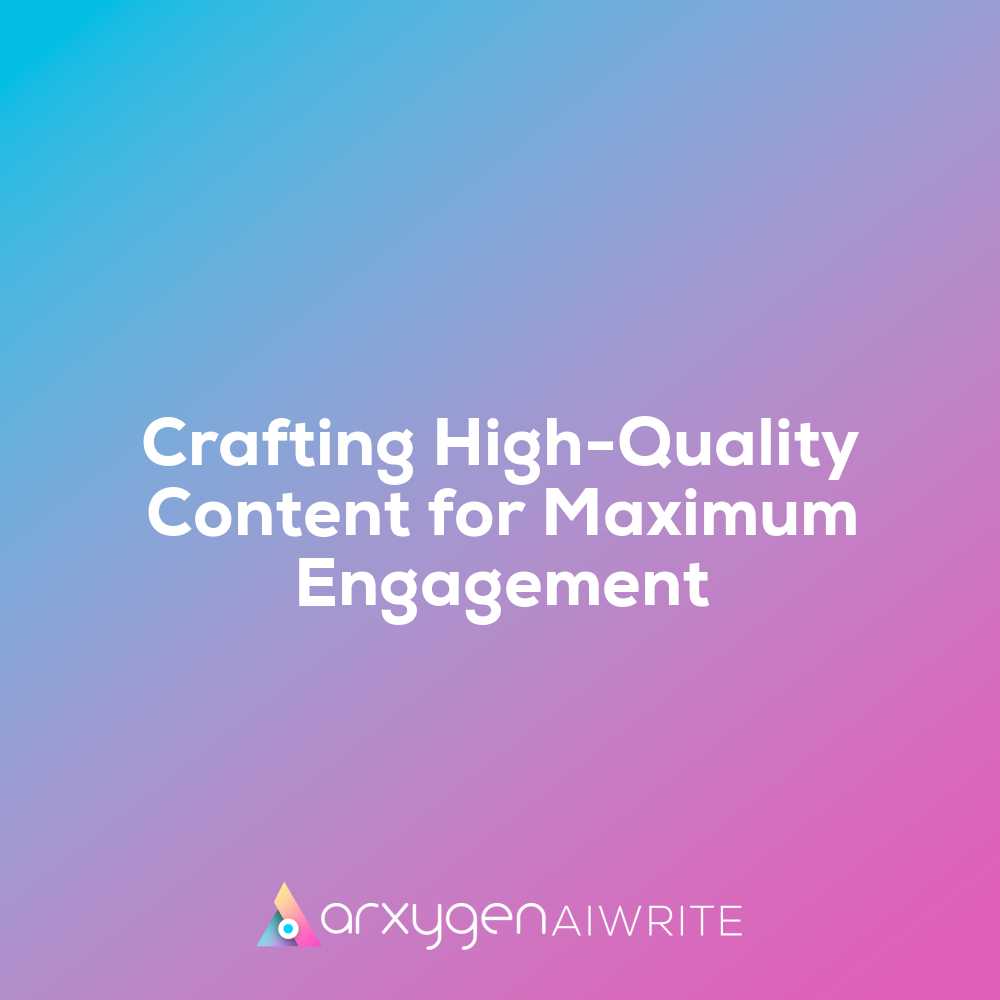Recognising the Significance of High-Quality Content
In today’s digital landscape, valuable information plays a crucial role in establishing authority and trust. When audiences encounter content that is both insightful and well-researched, they are more likely to view the source as a credible authority in the field. For instance, a blog that consistently provides expert tips on home improvement not only attracts readers but also builds a loyal following. This trust fosters a deeper connection, encouraging users to return for more.
“Creating high-quality content isn’t just about filling space; it’s about providing real value that resonates with your audience.”
The Impact of Quality Content on Audience Engagement
High-quality content is a powerful tool for driving audience engagement and loyalty. When readers find content that resonates with their interests or solves their problems, they feel compelled to interact. Engaging articles, videos, or infographics can spark conversations and encourage sharing across social media platforms. This organic sharing amplifies reach and draws in new audiences.
Moreover, when content is crafted with care and precision, it encourages readers to spend more time on the site. This increased dwell time signals to search engines that the content is relevant and valuable, further enhancing its visibility. For example, a well-structured guide on sustainable living can inspire readers not only to read but also to take action, such as implementing eco-friendly practices in their daily lives.
Ultimately, creating high-quality content isn’t just about filling space; it’s about providing real value that resonates with your audience. When users recognise that your site offers reliable information and engaging material, they’re more likely to become loyal followers. This cycle of trust and engagement is what transforms casual visitors into dedicated advocates for your brand.
Effective Approaches to Crafting Engaging Content
Creating high-quality content that captivates your audience is essential for any successful online strategy. One effective way to enhance user experience is by incorporating visual elements and multimedia. Images, videos, and infographics not only break up text but also provide a richer context for your message. For instance, a well-placed video can explain complex ideas more clearly than words alone. This multisensory approach keeps readers engaged and encourages them to share your content across platforms.
The Power of Storytelling in Content Creation
In addition to visuals, employing storytelling techniques can significantly boost reader engagement. People are naturally drawn to stories; they create emotional connections and foster a sense of relatability. For example, consider how a blog post about a product can transform into a narrative about a customer’s journey. By illustrating challenges faced and how the product provided a solution, you invite readers to see themselves in that story. This not only enhances their interest but also builds trust in your brand.
Furthermore, integrating personal anecdotes or testimonials can add authenticity to your content. Readers appreciate hearing real experiences that resonate with their own lives. As you weave these elements into your writing, remember that the ultimate goal is to create a dialogue with your audience. When they feel involved, they are more likely to engage further—whether by leaving comments, sharing the post, or exploring other areas of your site.
Ultimately, the combination of striking visuals and compelling narratives forms a powerful toolkit for anyone looking to craft engaging content. By understanding what resonates with your audience and incorporating these strategies effectively, you can significantly enhance the impact of your online presence.
Evaluating Content Effectiveness and Enhancing Audience Engagement
Creating high-quality content requires a keen understanding of how it performs. Various tools are available to assess content performance and audience interaction. Google Analytics is a popular choice, offering insights into page views, bounce rates, and user behaviour. Social media platforms also provide engagement metrics, such as likes, shares, and comments. These metrics help identify which content resonates most with your audience.
Refining Content Through Feedback and Analytics
The process of refining content is iterative. It involves analysing feedback and performance data to enhance future posts. For instance, if a blog post receives numerous comments asking for clarification, it’s essential to address those points in subsequent articles. This not only improves the quality of your content but also fosters a sense of community among readers.
Additionally, A/B testing can be an effective strategy. By comparing two versions of the same content, you can determine which one generates higher engagement rates. This method allows for data-driven decisions, ensuring your content evolves based on what truly interests your audience.
Moreover, consider utilising surveys or polls to gather direct feedback from your readers. Asking questions about their preferences can yield valuable insights into what they find most engaging. This proactive approach demonstrates that you value their opinions and are committed to providing relevant content.
In summary, measuring engagement through various tools and metrics is crucial for crafting high-quality content. The iterative process of refining based on analytics and audience feedback ensures that your material remains relevant and compelling. By embracing this dynamic approach, you can significantly enhance audience interaction and build a loyal readership.

